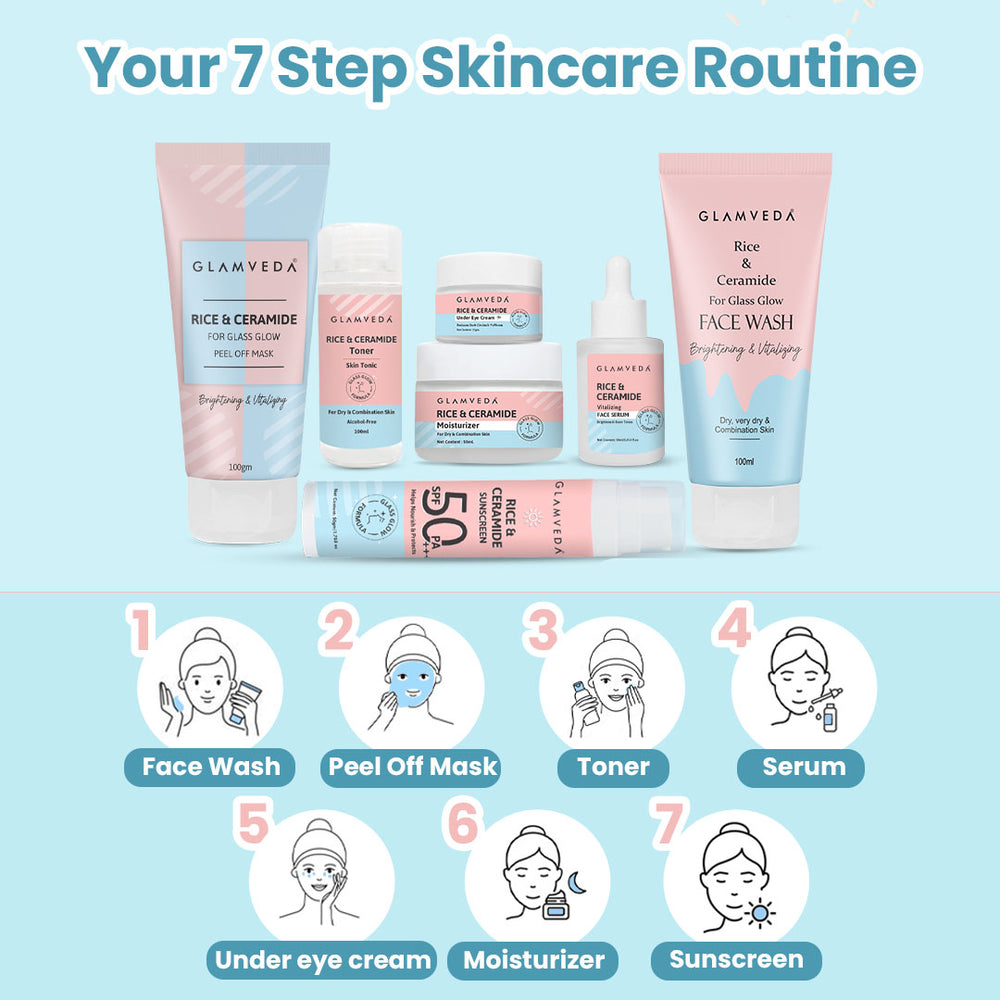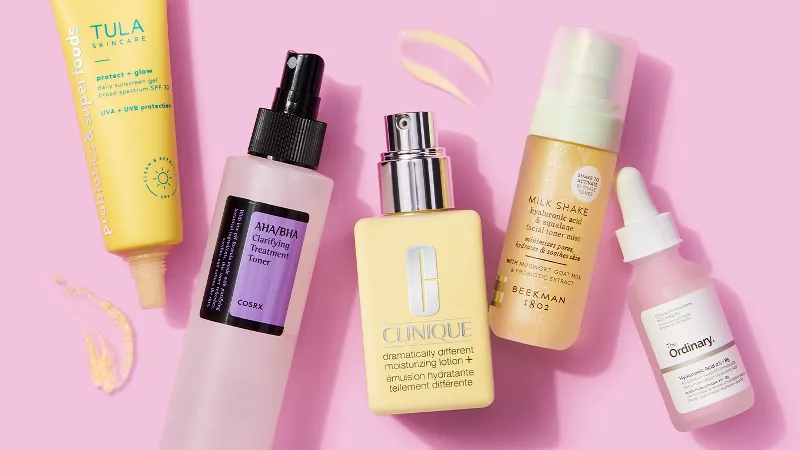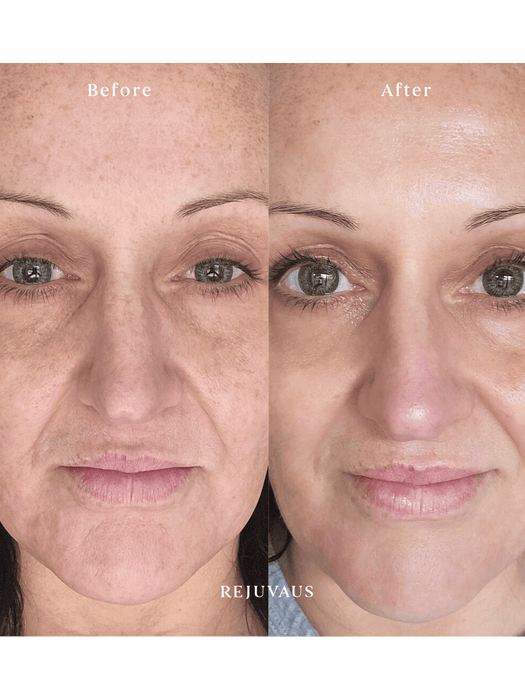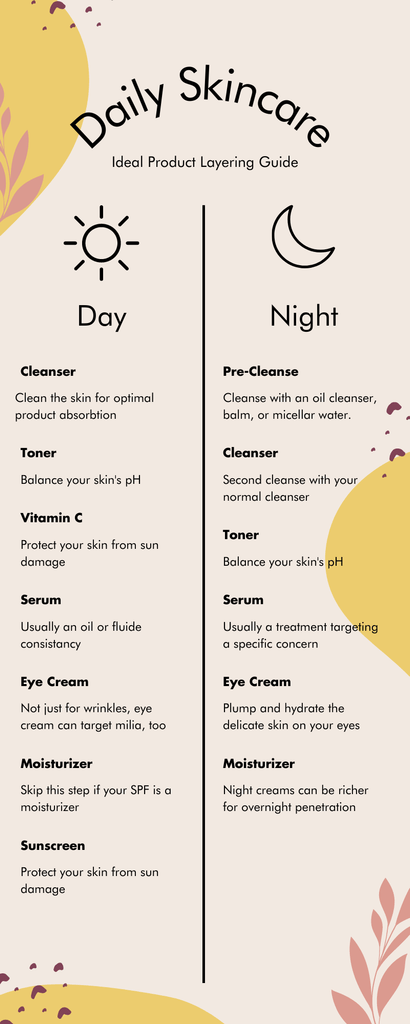Are you ready to transform your skin and bring out your natural glow? A simple, effective skincare routine can make all the difference.
But with so many products and steps out there, where do you start? This 7 step skincare routine is designed just for you—easy to follow and packed with powerful results. By the end of this article, you’ll have a clear plan to nourish your skin, boost your confidence, and feel amazing every day.
Keep reading, because your best skin is just seven steps away.
Cleanse Your Face
Cleansing your face is the first and most crucial step in your skincare routine. It removes dirt, oil, and impurities that build up on your skin throughout the day. Proper cleansing prepares your skin to absorb other skincare products better. A clean face feels fresh and helps prevent breakouts and dullness.
Choosing The Right Cleanser
Select a cleanser based on your skin type. For oily skin, use a foaming or gel cleanser to remove excess oil.
Dry skin benefits from creamy or hydrating cleansers that add moisture. Sensitive skin needs gentle, fragrance-free cleansers to avoid irritation.
Look for ingredients that suit your needs:
- Salicylic acid for acne-prone skin
- Hyaluronic acid for hydration
- Aloe vera for soothing sensitive skin
Proper Cleansing Techniques
Start by washing your hands to avoid transferring bacteria to your face. Use lukewarm water to open pores without causing dryness. Apply a small amount of cleanser and massage gently in circular motions for about 30 seconds.
Focus on areas like the forehead, nose, and chin where oil collects. Rinse thoroughly with lukewarm water to remove all residue. Pat your face dry with a clean towel—never rub, to avoid irritation.
Cleanse twice daily, morning and night, to keep your skin clear and healthy.
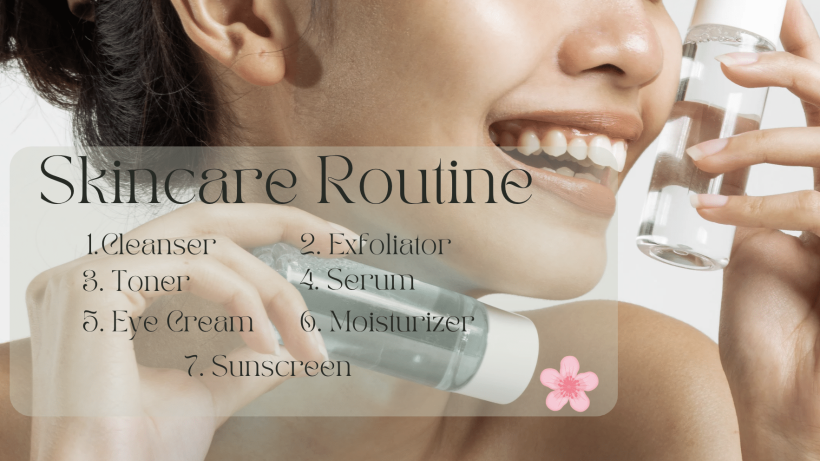
Credit: www.cuindependent.com
Exfoliate Regularly
Exfoliating regularly is a key part of keeping your skin fresh and glowing. It helps remove dead skin cells, unclogs pores, and allows your other skincare products to work better. But how do you choose the right exfoliant, and how often should you use it without harming your skin?
Types Of Exfoliants
There are two main types of exfoliants: physical and chemical. Physical exfoliants use small particles or tools to manually scrub away dead skin. Examples include sugar scrubs, facial brushes, and exfoliating gloves.
Chemical exfoliants use acids or enzymes to dissolve dead skin cells gently. Common ingredients you might see are alpha hydroxy acids (AHAs) like glycolic acid, beta hydroxy acids (BHAs) like salicylic acid, and natural enzymes from fruits.
Choosing between physical and chemical exfoliants depends on your skin type. If you have sensitive or acne-prone skin, chemical exfoliants often cause less irritation. Have you noticed how some scrubs can leave your skin feeling raw? That’s a sign to switch to a gentler chemical option.
How Often To Exfoliate
Exfoliating too often can damage your skin barrier, causing redness and dryness. Most people benefit from exfoliating 2 to 3 times a week. However, if your skin is very sensitive, once a week might be enough.
Think about your lifestyle and skin condition. Do you wear makeup daily? Are you exposed to pollution? These factors can increase the need for regular exfoliation. But always listen to your skin—if it feels tight or irritated, reduce the frequency.
Have you ever experienced a breakout right after exfoliating? That might be your skin telling you to slow down. Adjusting how often you exfoliate can make a big difference in your skin’s health and appearance.
Tone Your Skin
Toning your skin is a crucial part of any skincare routine. It helps to refresh your face, restore its natural pH balance, and prepare your skin for better absorption of moisturizers and serums. Many skip this step, but adding a toner can truly enhance your skin’s texture and clarity.
Benefits Of Toning
Toning removes leftover dirt, oil, and makeup that cleansing might miss. It tightens pores, making your skin look smoother and more even. Regular toning can also reduce redness and calm irritation, which is especially helpful if you have sensitive skin.
Personally, I noticed fewer breakouts after adding toner to my routine. My skin felt less oily throughout the day, and makeup applied more evenly. Have you ever wondered why your moisturizer sometimes feels less effective? Toning helps your skin absorb products better, maximizing their benefits.
Selecting A Suitable Toner
Not all toners are the same. You need one that matches your skin type and concerns. For dry skin, look for hydrating toners with ingredients like glycerin or hyaluronic acid.
If your skin is oily or acne-prone, choose a toner with salicylic acid or witch hazel to help control oil and fight blemishes. Sensitive skin benefits from alcohol-free toners with soothing ingredients like chamomile or aloe vera.
- Check the label:Avoid toners with high alcohol content if your skin is dry or sensitive.
- Test before use:Apply a small amount on your wrist to see if you react negatively.
- Consider your climate:In dry weather, a moisturizing toner works better; in humid conditions, a balancing toner is ideal.
Choosing the right toner can feel overwhelming, but it’s worth spending time on. What skin issues do you want to address? Your answer will guide you to the perfect toner that fits your needs.
Apply Serum
Applying serum is a crucial step in your skincare routine. Serums are lightweight, fast-absorbing liquids that deliver powerful ingredients directly to your skin. They help address specific skin concerns more effectively than regular moisturizers.
Popular Serum Ingredients
Serums often contain concentrated ingredients designed to target particular skin needs. Some popular ones include:
- Vitamin C:Brightens skin and reduces dark spots.
- Hyaluronic Acid:Hydrates and plumps the skin.
- Retinol:Boosts collagen production and smooths fine lines.
- Niacinamide:Reduces redness and improves skin texture.
- Peptides:Support skin repair and firmness.
Choosing the right ingredient depends on what your skin needs most. Have you ever noticed how some serums absorb quickly while others feel heavier? This often relates to their ingredient base.
Targeting Specific Skin Concerns
Think about your main skin concern before picking a serum. Are you dealing with dryness, acne, aging, or uneven skin tone? Each concern calls for different active ingredients.
For dryness, look for hydrating serums with hyaluronic acid or glycerin. If acne is your challenge, serums with salicylic acid or tea tree oil can help clear pores. Aging skin benefits from retinol or peptides to firm and smooth.
Applying your serum on clean, slightly damp skin can improve absorption. Do you apply your serum before or after toner? This small habit can change how well the serum works for you.
Moisturize Daily
Moisturizing daily is the cornerstone of any effective skincare routine. It keeps your skin hydrated, balanced, and protected against environmental stress. Skipping this step can leave your skin dry, flaky, and more prone to irritation.
Picking The Right Moisturizer
Choosing a moisturizer depends on your skin type and specific needs. If your skin feels tight or flaky, look for creams with ingredients like hyaluronic acid or glycerin that attract moisture. Oily skin benefits from lightweight, non-comedogenic gels or lotions that hydrate without clogging pores.
Consider any skin concerns you have, such as sensitivity or acne. Fragrance-free and hypoallergenic formulas are often better for sensitive skin. Ask yourself, does this moisturizer soothe and protect my skin throughout the day?
Day Vs Night Moisturizers
Your skin has different needs during the day and night. Daytime moisturizers usually include SPF to shield you from UV damage. They tend to be lighter to work well under makeup and in warmer temperatures.
Night moisturizers are richer and focus on repair and nourishment. Ingredients like peptides, retinol, or ceramides help your skin regenerate while you sleep. Think about how your skin feels at night—does it need extra hydration or calming after a long day?

Credit: www.skincancercentres.com.au
Protect With Sunscreen
Sunscreen is a crucial part of any skincare routine. It protects your skin from harmful UV rays. These rays cause sunburn, aging, and skin cancer. Applying sunscreen daily helps keep your skin healthy and youthful. No matter the weather, sunscreen shields your skin from damage.
Importance Of Sun Protection
Sun exposure can harm your skin in many ways. It leads to wrinkles, dark spots, and dryness. UV rays damage skin cells and cause premature aging. Sunburns hurt your skin and increase cancer risk. Protecting your skin daily reduces these risks. Sunscreen acts as a barrier against UV damage. It keeps your skin smooth and bright for longer.
Choosing Spf Products
Choose a broad-spectrum sunscreen to block UVA and UVB rays. Look for SPF 30 or higher for everyday use. Water-resistant sunscreens work better for outdoor activities. Pick a formula that suits your skin type—gel for oily skin, cream for dry skin. Test products on a small patch to avoid irritation. Reapply sunscreen every two hours for full protection.
Incorporate Face Masks
Incorporating face masks into your skincare routine can boost your skin’s health and appearance. Masks provide targeted care, helping to address specific skin concerns. They work deeply to cleanse, hydrate, or soothe your skin. Including masks enhances the overall effectiveness of your daily skincare steps.
Types Of Face Masks
- Clay Masks:Draw out impurities and control oil.
- Sheet Masks:Deliver hydration and nutrients quickly.
- Gel Masks:Soothe and refresh sensitive skin.
- Exfoliating Masks:Remove dead skin cells for a brighter look.
- Hydrating Masks:Boost moisture for dry or tired skin.
Frequency For Best Results
Use face masks 1 to 3 times per week for best results. Adjust the frequency based on your skin type:
- Oily skin: 2 to 3 times weekly to control shine.
- Dry skin: 1 to 2 times weekly for hydration.
- Sensitive skin: Once a week to avoid irritation.
Apply masks after cleansing and before moisturizing. This routine helps masks absorb better and work more effectively.

Credit: reluminatebeauty.com.au
Frequently Asked Questions
What Are The 7 Essential Steps In A Skincare Routine?
The 7 steps include cleansing, exfoliating, toning, treating, moisturizing, applying eye cream, and sunscreen. Each step targets specific skin needs for a healthier complexion.
How Often Should I Follow The 7 Step Skincare Routine?
You should follow this routine daily, preferably twice a day—morning and night—for optimal skin health and visible results over time.
Can I Customize The 7 Step Skincare Routine For My Skin Type?
Yes, customize products in each step based on your skin type. Choose gentle cleansers for sensitive skin and hydrating products for dry skin.
Why Is Sunscreen Important In The 7 Step Skincare Routine?
Sunscreen protects your skin from harmful UV rays, preventing premature aging and skin damage. It is crucial even on cloudy days.
Conclusion
Achieving a glowing complexion is easier with a solid skincare routine. Start with cleansing to remove dirt. Tone to balance your skin. Follow with a serum for targeted treatment. Moisturize to lock in hydration. Apply sunscreen daily for protection. Night cream nourishes as you sleep.
Each step plays a role in skin health. Consistency is key for best results. Tailor your routine to suit your skin type. Experiment until you find what works. Healthy skin boosts confidence and well-being. Enjoy the journey to better skin!
